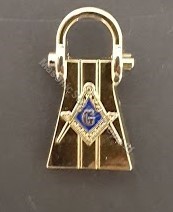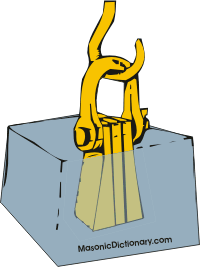Who Is Lewis?

At some point in your Masonic career, you may have heard or may hear someone referred to as a "Lewis", but may not understand
what that means, or the interesting history behind the way it came about.
In common usage, the term Lewis is used to refer to the son of a Master Mason, who has not yet become a Master Mason himself. In
Scotland, the son of a Master Mason can be initiated into the fraternity at the age of 18, as opposed to the customary age of 21.
In some parts of England, a Lewis may
Who Is Lewis?

recieve a preference in getting his Degrees before others that may have petitioned before him. The
son of a Mason is, in England, also called a a Lewis because it is his duty to support the sinking powers and aid the failing strength
of his father.
With its emphasis on equality, Freemasonry in the United States, for the most part, recognizes no such special privilege, although there is a reference to
a Lewis in the Constitution of the Grand Lodge of Pennsylvania, which were drafted in 1727. And a classic instance of a lewis being
initiated is George Washington, who was only twenty years and some months of age when he became an Entered Apprentice in "The Lodge
at Fredericksburgh" (Virginia), November 4,1752.
But where did this term come from? And why is it used to describe the son of a Master Mason?
In craft masonry, the term lewis refers to a device by which finish stones may be lifted and placed in place. A dovetail cutout is
made in the stone. The lewis consists of three bars of iron, designed to fit in the dovetail. One of them is the same thickness
throughout, but the other two are tapered, and are half as wide at the top as at the bottom.
As such, these two pieces can be placed inside the dovetail mortise.
 When the third spacing bar is wedged between the two, however, they're pushed out to fill the space. There are holes in the
exposed portion of the three iron pieces such that a shackle or bolt may be inserted, thereby allowing the stone to be easily
lifted and manipulated into place.
When the third spacing bar is wedged between the two, however, they're pushed out to fill the space. There are holes in the
exposed portion of the three iron pieces such that a shackle or bolt may be inserted, thereby allowing the stone to be easily
lifted and manipulated into place.
Although there are several theories as to where the term lewis came from to refer to this device, one of the more plausible, given
the close relationship between the operative masons and the clergy, is that the term derives from the Latin word levis, which means
to levitate or lift up.
Regardless of the origin of the term, or its applicability in modern Freemsonry, there can be little doubt that no prouder moment
exists for a Mason than when he can raise up his son and welcome him as a brother in our Fraternity.
-- The Masonic Bulletin, Northwest Ohio Freemasonry, May 2017
